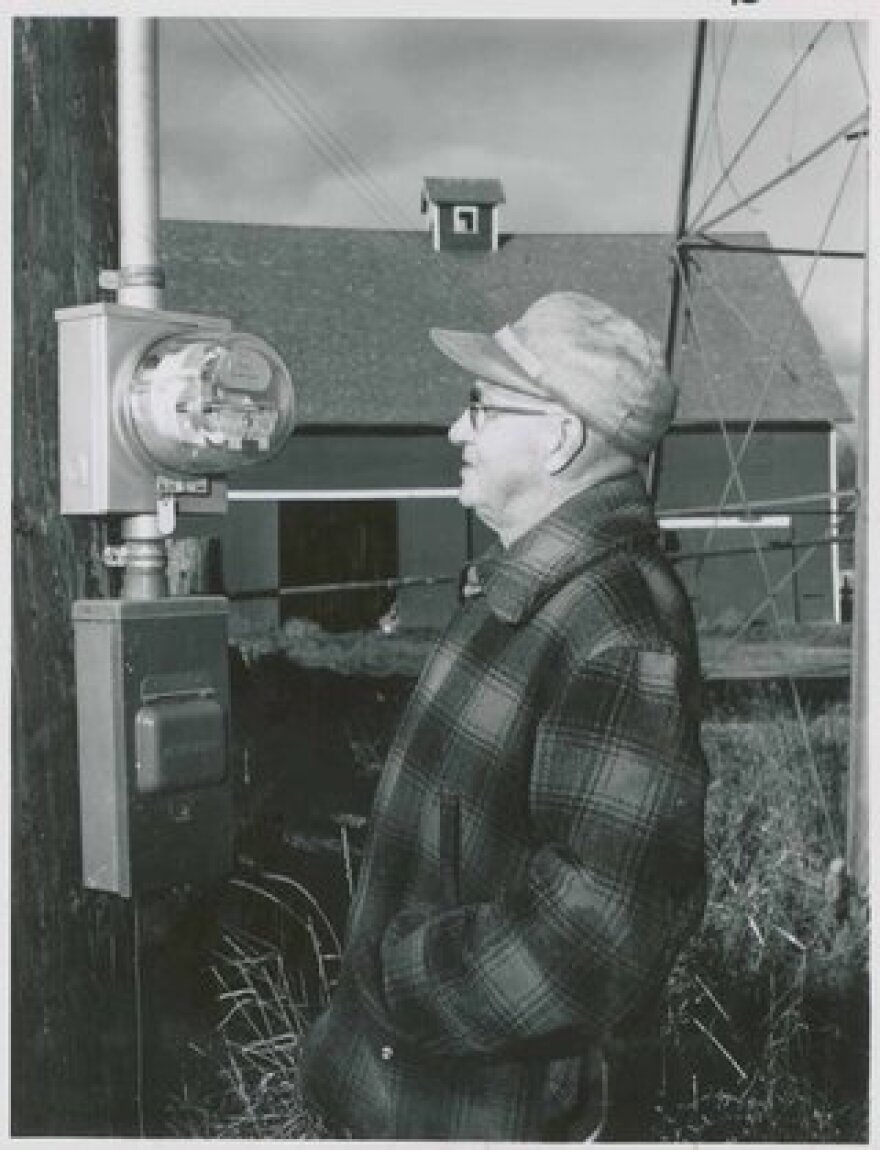


Rural electrification changed life on farms in South Dakota, especially those involved in dairy and poultry production. Many farms did not have electricity until the 1950s and used wind energy, stationary engines, and tractors to generate needed power.
Rural electrification began with experiments in the 1920s that provided central station power to farmers. South Dakota’s experimental test line ran from Sioux Falls to 17 farms in Renner. Manufacturers of electric appliances, like General Electric, began selling the need for electricity to consumers long before electrification reached them. Marketing an easier and quicker way to work appealed to many rural residents who in turn began to demand electricity and the opportunities that their urban cousins enjoyed.
As early as the 1880s, urban communities like Aberdeen, Brookings, and Sioux Falls developed municipal electric utilities. The vast distances between farms, ranches and smaller communities made it too costly for municipal utilities to build electric lines in rural South Dakota. It was not until the President Franklin D. Roosevelt signed the Rural Electrification Act of 1936, forming the Rural Electrification Administration, that electricity became available to many rural areas. The Rural Electrification Administration (REA), a government agency, provided capital through loans to establish utility cooperatives that installed power lines from the existing grid structure to the farm. Rural power cooperatives brought new life to rural America. They provide electricity, telephones, and other 20th century technologies to farms, ranches, and rural communities
From 1935 to 1955, the majority of South Dakota farms, ranches, and rural communities gained electricity. Progress in South Dakota was slow due to the vast distances between farms, and WWII stalled progress in the early 1940s. Some ranches in more remote areas did not have access to electricity until the 1960s, relying on wind or gas generators to produce electricity.
Off the Grid
Harnessing the wind to produce electricity is not a new technology. Between the 1870s and the 1930s, thousands of famers across the US used wind to pump water. In the 1920s, small wind turbines generated 32-volt electricity for farm and home use. Farmers could purchase small generating plants from Delco, Prest-O-Lite, Exide or other manufacturers. These farm lighting units consisted of an electrical generator, an engine to drive the generator, and a bank of storage batteries to supply power when the generator is not running. Manufacturers provided all manner of household appliances and tools that ran on 32 volts. 32-volt wind generators were the ancestors of today’s wind turbines.
Connecting to the Grid with Cooperatives
Today, South Dakota has 28 distribution Cooperatives that power 65,166 miles of electrical lines across the state of South Dakota. Electric cooperatives invest in innovative power generating technologies to meet the growing demand for energy. Today, 70% of South Dakota’s net electricity generation are from renewable resources—46% from hydroelectric and 24% from wind.
The Rural Electrification Act provided the funding for cooperatives to bring power to the people in rural South Dakota. It was the catalyst for improving sanitation, increasing production, and reducing labor on farms and ranches across South Dakota.







